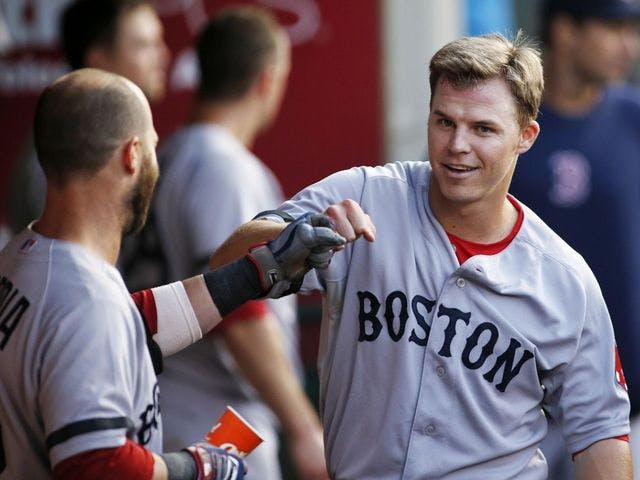I’ll admit: I’m a Boston Red Sox fan.
I came by my fandom honestly – I married a diehard Red Sox fan in 2004 and started watching Sox games in self-defense. (But what a year to start learning the game!) Lately, however, there’s not much joy in Red Sox nation. It’s been a crushingly brutal year.
The one bright spot we have to look forward to is the annual Major League All-Star Game. (And not only because it gives us a break from watching the near-nightly tragedy unfold.) This year, the only representative from the Red Sox is Brock Holt, a utility player.
For the uninitiated, that means Holt isn’t a “starter.” He comes in to cover nearly any position on the field when a teammate is injured or otherwise unable to play.
In the lexicon of the typical workplace, Holt is “B-player.”
‘B’ players can be all-stars, too
And that’s why (aside from my fandom) I’m excited to see Holt named to the All-Star team. He earned his slot there. Because whatever position he’s assigned to cover, he performs at top caliber, stepping into the shoes of the superstars and carrying forward with aplomb, grace, and excellence.
And keep in mind, Holt isn’t a B-player because he lacks the abilities of an A-player (he has those skills in spades); he simply doesn’t have the spotlight or attention of the more glamorous role of starters on a Major League Baseball team.
I like how the Boston Globe put it:
The All-Star nod was … an individual honor that happened to come because Holt was doing his job.
“‘I don’t really ever think of anything individually,’ Holt said. ‘I just go out and I play hard for my teammates and my coaches and if people notice that I’m out there doing well, that’s icing on the cake. Like I said, I’m just going to go out and try to play the game the right way and enjoy every second if it because a lot of people don’t get the opportunity that I have to be able to put on a major-league uniform every day — especially a Boston Red Sox uniform. So it’s pretty special to say that’s what you do. But to be selected to this All-Star game is pretty cool.’”
3 traits of superstar “B” players
What we have in Brock Holt is a superstar “B-player.” I’m willing to bet your organization is chock full of superstar B-players, too.
How do you spot them? Look for these three (3) traits:
- They jump on any opportunity given – Give them a shot at an interesting project or a boring-but-necessary exercise and they’ll leap at the opportunity to contribute.
- They deliver results – Completing the task assigned well is the goal, and they do it with a good attitude.
- They are committed to the success of the team – Superstar B-players typically aren’t glory hounds. They usually look out for the greater good.
Our challenge as leaders is ensuring B-players get the recognition, praise and appreciation they so richly deserve. Too often, our official recognition efforts are limited to the A-players, forgetting that the A-players can only continue to meet very-high expectations with a solid roster of Superstar B-Players right behind them.
Who are the Superstar B-Players on your team? How are they recognized and celebrated for their contributions and successes?
